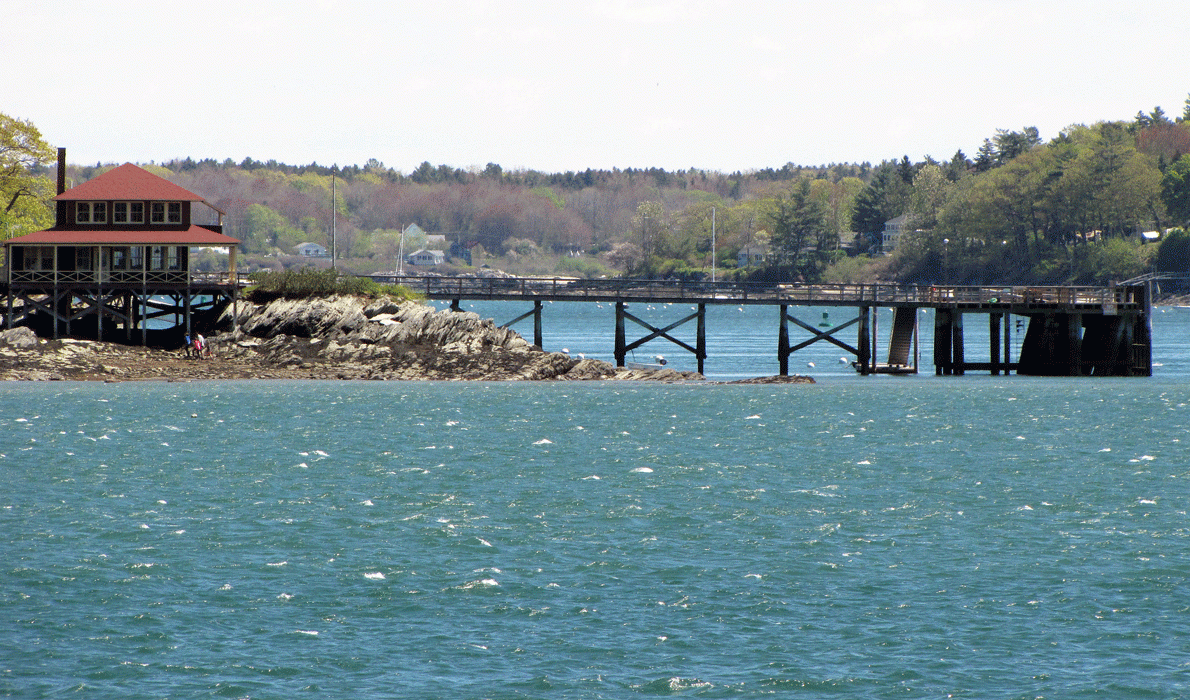Posted October 23, 2018
Last modified October 23, 2018
By Catherine Schmitt
According to the U.S. Drought Monitor, about half of Maine is in abnormally dry conditions, with moderate to severe drought along the entire coastline, affecting approximately 1,089,000 people or about 82 percent of the state's population.
This is consistent with the pattern of recent years, when drought emerged in the second half of 2015, 2016, and 2017, with 2016 being the most severe. In all of these years, spring rains eased conditions briefly, but drought returned during the summer.
Ground water wells went dry, farm crops struggled, and lakes stopped overflowing into streams. Maine estuaries also experienced drought, but the effects are less obvious.
Estuaries are defined as a place where fresh and salt water converge and mix. During drought, there is less fresh water to meet the salt, and everything from water clarity and quality to salinity and fish populations can be affected. The impact depends on how connected an estuary is to the surrounding watershed. Rain enhances connectivity between land and the ocean; drought diminishes connectivity.
The Damariscotta River is home to the University of Maine’s Darling Marine Center, and as a result is one of the most studied estuaries in Maine. Recent research by UMaine undergraduate students found that during the 2016 drought, the Damariscotta had increased turbidity, a measure of the amount of suspended sediment and other particles in the water.
Surface water is typically thought to be clearer during drought because there’s less runoff from land. But in Maine estuaries, including the Damariscotta, turbidity is not as affected by drought since it comes from tidal mixing that stirs up sediment from the muddy bottom, said Damian Brady of the University of Maine. Theincoming tide moves faster than the outgoing tide, leaving sediment behind that over time builds up mud flats and fringes of salt marsh.
One exception is the Kennebecestuary, where the outgoing tide is greater because of the large river flow and sediment tends to be carried out to sea. The Kennebec might be less turbid during drought when river flows are decreased.
Drought can also cause problems in the future, according to researchers studying the Chesapeake Bay. Without rain, nitrogen and other chemicals build up on the landscape. When it does rain, it pours, and the accumulated pollutants are washed into rivers and estuaries in highly concentrated pulses.
Then, without more rain to “flush the system,” nutrients and pollutants may linger and cause problems like algal blooms. Such may have been the case in Casco Bay, where the 2017 drought was partly to blame for a proliferation of a green algae known as sea lettuce earlier during the summer of 2018, according to Friends of Casco Bay.
“These changes can be subtle and complex, but important,” said Larry Mayer of UMaine. “Drought might simply change the relative amounts of nutrients like nitrogen and silicon delivered by rivers. But in the estuary, the ratio of nutrients can influence the types of algae that bloom, resulting in enhancing or inhibiting red tide blooms relative to less harmful algae,” he said.
“It’s a double-edged sword,” said Brady, noting that drought can be good for shellfish. There were fewer rainfall-driven closures of shellfish harvesting areas this summer, and growing conditions were improved with fewer inputs of acidic freshwater. The higher-pH, saltier ocean pushed farther inland, reaching aquaculture operations in the upper reaches of coastal rivers.
Fish and other marine organisms shift their distribution in response to the salt-fresh boundary. Justin Stevens, who monitors fish populations in the Penobscot RiverandBayfor NOAA Fisheries, observedfish spread out through more of the estuary as salinity pushed closer to Bangor with the low freshwater flows.
Upstream, migratory fish have had a harder time as streams and lake outlets dried up, preventing salmon from reaching prime spawning habitat in the headwaters, and juvenile alewives from leaving lakes. But according to Stevens, there is good news.
“It is cooling down, leaves are changing and juvenile river herring are arriving in the estuary, so the recent rains may have gotten some of them moving out of the lakes.”
Catherine Schmitt is communications director for Maine Sea Grant, based at the University of Maine, and is author ofThe President’s Salmon, Historic Acadia National Park, and A Coastal Companion: A Year in the Gulf of Maine from Cape Cod to Canada.
Contributed by




